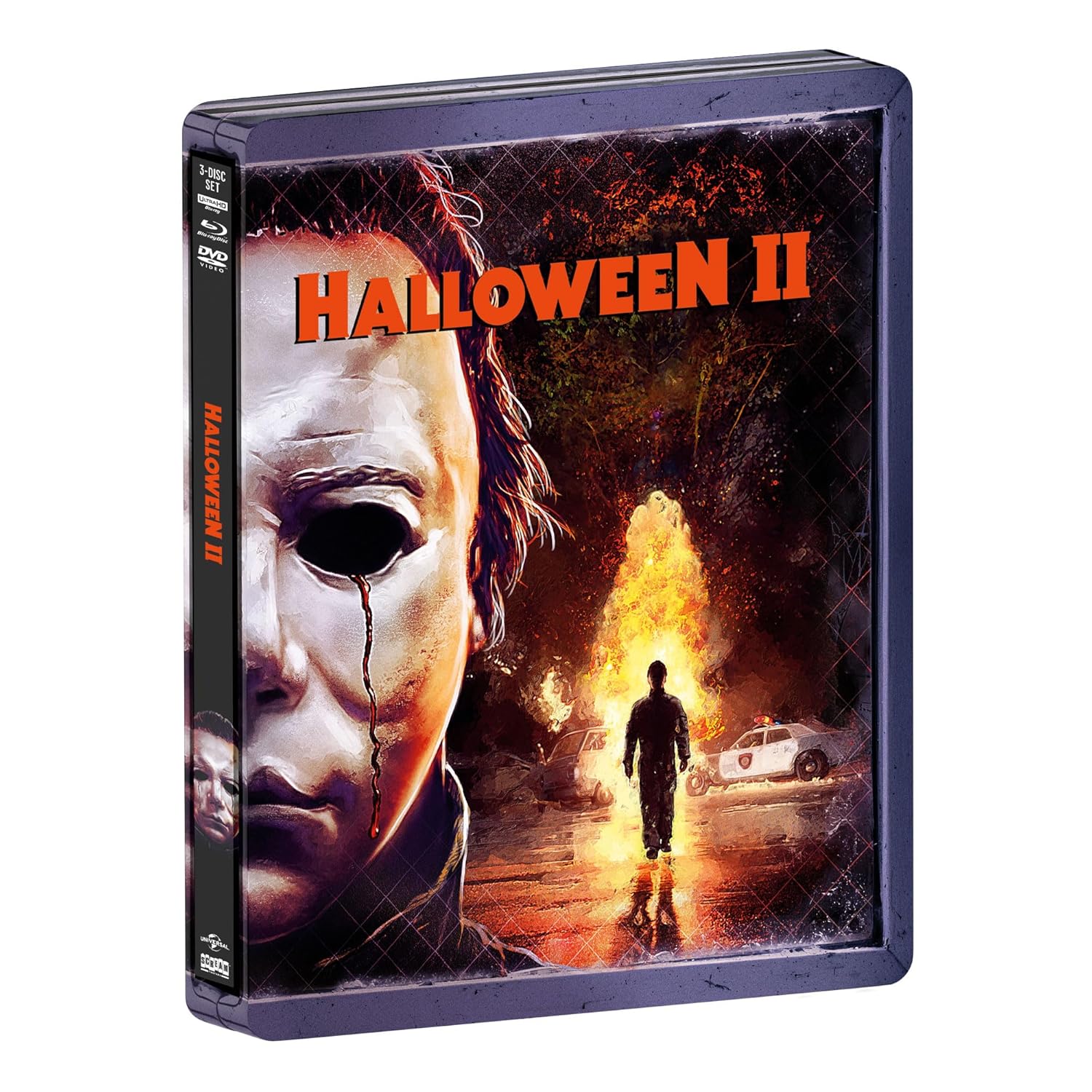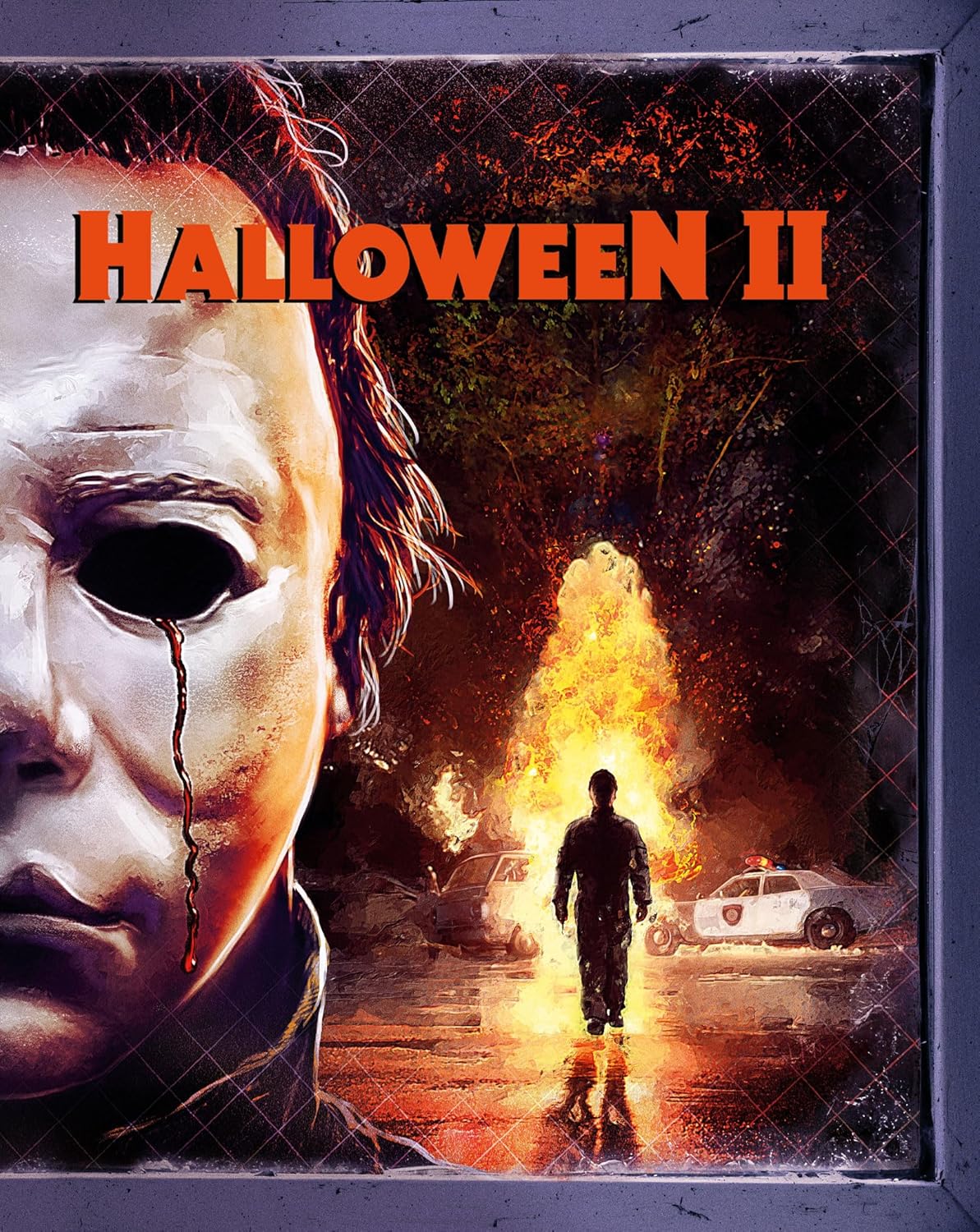
Halloween II (1981): Limited Edition Review Halloween Movie – Oemiu
Halloween II (1981): A Bloodier Sequel That Divides Fans
The shadow of Michael Myers looms large over the horror genre. The original *Halloween* (1978) set the standard for slasher films, a low-budget masterpiece that relied on suspense, atmosphere, and John Carpenter’s iconic score to terrify audiences. Following such a groundbreaking film is a daunting task, and *Halloween II* (1981) faced that challenge head-on, attempting to continue the story of Laurie Strode and her relentless pursuer. But does it live up to the legacy of its predecessor, or does it fall victim to the pitfalls of sequelization? The answer, as with many sequels, is complex and depends heavily on what you’re looking for in a *Halloween Movie*.
## From Haddonfield to Haddonfield General: Continuing the Nightmare
*Halloween II* picks up immediately after the events of the first film. Laurie Strode, traumatized and wounded, is rushed to Haddonfield Memorial Hospital. Meanwhile, Michael Myers, having survived his encounter with Dr. Loomis, continues his murderous rampage through the town. This immediate continuation is both a strength and a weakness. It allows the film to maintain the tension and momentum of the original, throwing viewers right back into the heart of the horror. However, it also creates a sense of repetition, as Michael is once again stalking Laurie, albeit in a different location. The hospital setting, while offering a new and claustrophobic environment, also removes some of the suburban vulnerability that made the first film so effective. We’re no longer watching teenagers being terrorized in their homes; we’re witnessing a massacre in a supposedly safe institution. This shift in setting leads to a shift in tone. *Halloween II* is undeniably more violent and gory than its predecessor. The kills are more graphic, the blood flows more freely, and the overall atmosphere is less about suspense and more about visceral horror.
The absence of John Carpenter as director is also keenly felt. While Carpenter co-wrote and produced the sequel, the directorial reins were handed over to Rick Rosenthal. Rosenthal does a competent job, maintaining a sense of dread and pacing, but he lacks Carpenter’s masterful control of atmosphere and his ability to create suspense through minimalist techniques. The jump scares are more frequent, and the tension is often ratcheted up through sheer volume and visual shock rather than subtle build-up. Some fans argue that this shift in style detracts from the original’s artistic merit, turning the *Halloween Movie* into a more conventional slasher. Others appreciate the increased intensity and the willingness to push the boundaries of on-screen violence. Ultimately, *Halloween II* is a product of its time, reflecting the trends of the early 1980s slasher boom. It embraces the gore and excess that defined many of those films, while still attempting to maintain the core elements that made the original so iconic. The decision to link Laurie Strode and Michael Myers as siblings, a controversial plot point introduced in this film, has become a defining element of the *Halloween Movie* franchise, influencing many subsequent sequels and reboots.
## Bloodlines and Body Count: Examining the Plot and Performances
The most significant and enduring contribution of *Halloween II* to the *Halloween Movie* lore is the revelation that Laurie Strode is Michael Myers’ sister. This plot point, reportedly added by Carpenter to provide a reason for Michael’s relentless pursuit, has been both praised and criticized by fans. On one hand, it adds a layer of psychological complexity to Michael’s motivations, suggesting that his actions are driven by more than just random evil. On the other hand, it arguably diminishes the randomness and universality of the original’s terror. In the first film, Michael was a faceless embodiment of evil, capable of striking anyone at any time. By giving him a specific target, the sequel arguably narrows the scope of the horror.
Jamie Lee Curtis returns as Laurie Strode, delivering a convincing performance as a traumatized and vulnerable young woman. However, her character spends much of the film incapacitated in a hospital bed, limiting her agency and impact on the plot. Donald Pleasence is once again excellent as Dr. Loomis, the obsessed psychiatrist who relentlessly hunts Michael Myers. Pleasence imbues Loomis with a sense of manic energy and unwavering conviction, making him a compelling and often unsettling figure. The supporting cast is also strong, with several memorable performances from the hospital staff and other residents of Haddonfield. However, many of these characters are ultimately just fodder for Michael’s rampage, serving primarily as victims to increase the body count.
The plot of *Halloween II* is relatively straightforward. Michael Myers stalks Laurie Strode through the hospital, killing anyone who gets in his way. Dr. Loomis attempts to track Michael down and stop him, but his efforts are largely unsuccessful. The film culminates in a fiery confrontation between Loomis, Laurie, and Michael, which seemingly ends with Michael’s death. While the plot is simple, it is effective in maintaining a sense of tension and dread throughout the film. The hospital setting provides a claustrophobic and unsettling backdrop for the horror, and the relentless pace of the killings keeps the audience on edge. However, some viewers may find the plot repetitive and predictable, lacking the originality and suspense of the original *Halloween*. The success of any *Halloween Movie* largely depends on audience expectations, and *Halloween II* delivers on its promise of delivering a slasher experience.
| Feature | Halloween (1978) | Halloween II (1981) |
|---|---|---|
| Director | John Carpenter | Rick Rosenthal |
| Atmosphere | Suspenseful, Atmospheric | Gory, Visceral |
| Setting | Suburban Haddonfield | Haddonfield Memorial Hospital |
| Pace | Slow Burn | Faster Paced |
| Plot Twist | None | Laurie is Michael’s sister |
| Violence | Implied, Minimal | Explicit, Graphic |
## Legacy and Lasting Impact: Evaluating the Sequel’s Place in Horror History
*Halloween II* has had a significant impact on the horror genre, both positive and negative. On one hand, it helped to solidify the slasher film formula, establishing many of the tropes and conventions that would become commonplace in subsequent films. The film’s emphasis on gore and violence paved the way for the more extreme and explicit horror films of the 1980s. The sibling connection introduced in the film became a recurring theme in the *Halloween Movie* franchise, influencing numerous sequels and reboots.
However, *Halloween II* also drew criticism for its reliance on gore and violence, with some arguing that it degraded the artistic merit of the original. The film’s plot twist, revealing Laurie’s parentage, has also been a source of controversy, with some fans arguing that it undermined the universality of the horror. Despite these criticisms, *Halloween II* remains a popular and influential film, beloved by many horror fans for its intense atmosphere, memorable kills, and iconic villain. It has spawned numerous sequels, remakes, and reboots, solidifying its place in horror history. The debate over whether *Halloween II* is a worthy sequel to the original will likely continue for years to come, as fans grapple with its strengths and weaknesses. It presents a grimmer, bloodier side of Haddonfield, forever changing how audiences viewed the *Halloween Movie*.
## Limited Edition Releases: Collector’s Items and Special Features
Over the years, *Halloween II* has been released in numerous limited edition formats, catering to collectors and die-hard fans of the franchise. These releases often include:
* **Remastered video and audio:** Providing a superior viewing and listening experience compared to previous releases.
* **Deleted scenes and alternate endings:** Offering a glimpse into the filmmaking process and providing new insights into the story.
* **Behind-the-scenes documentaries:** Featuring interviews with the cast and crew, exploring the making of the film.
* **Audio commentaries:** Providing insightful commentary on the film’s production and themes.
* **Collectible packaging and artwork:** Enhancing the value and appeal of the release for collectors.
The prices of these limited edition releases can vary widely, depending on their rarity and condition. Some editions, particularly those that are long out of print, can fetch hundreds of dollars on the secondary market. For serious collectors, these releases represent a valuable investment and a chance to own a piece of horror history. Choosing the right *Halloween Movie* edition can dramatically enhance the viewing experience.
Collectors often seek out specific features, such as:
* Original theatrical cuts
* Restored special effects
* Exclusive interviews
* Limited edition artwork prints
Ultimately, the value of a limited edition release is subjective, depending on the collector’s individual preferences and priorities. However, for fans of *Halloween II*, these releases offer a unique opportunity to delve deeper into the film and celebrate its enduring legacy. For those dedicated to the *Halloween Movie* franchise, obtaining a limited edition is a testament to their love of the genre.
| Limited Edition Feature | Description | Value to Collector |
|---|---|---|
| Remastered Video/Audio | Improved picture and sound quality | High – Enhances viewing experience |
| Deleted Scenes | Never-before-seen footage | Medium – Provides new content |
| Behind-the-Scenes Doc | Insights into production | Medium – Educational and entertaining |
| Audio Commentary | Director/Cast commentary | High – Adds depth and context |
| Collectible Packaging | Unique artwork, limited edition numbering | High – Increases collectibility |
| Original Theatrical Cut | Unedited version of the movie | Medium – Preserves original intent |
Frequently Asked Questions (FAQ)
Is *Halloween II* a good sequel?
Whether *Halloween II* is a “good” sequel is subjective and depends on individual preferences. Some fans appreciate its intense atmosphere, memorable kills, and continuation of the story immediately after the first film. They see it as a natural progression of the original, expanding on the mythology and providing a more visceral horror experience. Others criticize it for its increased gore and violence, arguing that it detracts from the suspense and atmosphere of the original. They also dislike the plot twist revealing Laurie’s parentage, feeling that it undermines the universality of the first film’s terror. Ultimately, *Halloween II* is a more conventional slasher film than its predecessor, and whether that’s a positive or a negative depends on what you’re looking for in a sequel. It’s a definite entry in the *Halloween Movie* collection.
How does *Halloween II* compare to the original *Halloween*?
*Halloween II* differs significantly from the original *Halloween* in several key aspects. The most notable difference is the shift in tone. The original *Halloween* is a masterclass in suspense, relying on atmosphere, suggestion, and minimalist techniques to create a sense of dread. *Halloween II* is much more explicit in its violence, featuring more graphic kills and a higher body count. The setting also differs, with *Halloween II* taking place primarily in a hospital, while the original was set in the suburban streets of Haddonfield. The plot also introduces a major change, revealing that Laurie Strode is Michael Myers’ sister, a twist that has been both praised and criticized. Finally, John Carpenter did not direct *Halloween II*, handing the reins over to Rick Rosenthal, which resulted in a different directorial style.
What is the significance of the Laurie Strode and Michael Myers sibling connection?
The revelation that Laurie Strode is Michael Myers’ sister, introduced in *Halloween II*, is one of the most controversial and enduring aspects of the *Halloween* franchise. On one hand, it adds a layer of psychological complexity to Michael’s motivations, suggesting that his actions are driven by more than just random evil. It gives him a specific target and a personal connection to Laurie. On the other hand, it arguably diminishes the randomness and universality of the original’s terror. By making Michael’s actions personal, the sequel narrows the scope of the horror and removes some of the fear that anyone could be a victim. This plot point has been retconned and ignored in some subsequent sequels and reboots, highlighting its divisive nature.
Is *Halloween II* considered canon in the *Halloween* franchise?
The concept of “canon” in the *Halloween* franchise is notoriously complex and inconsistent. Over the years, numerous sequels, reboots, and alternate timelines have been introduced, creating a confusing web of continuity. *Halloween II* is generally considered canon within the timeline established by the original film and the subsequent sequels up to *Halloween: The Curse of Michael Myers* (1995). However, the later films *Halloween H20: 20 Years Later* (1998) and *Halloween: Resurrection* (2002) retconned some of the events of *Halloween 4-6*, and the 2018 *Halloween* reboot completely erased all previous sequels, including *Halloween II*. Therefore, the canonicity of *Halloween II* depends on which timeline or continuity you are considering.
What are some of the best limited edition releases of *Halloween II*?
Identifying the “best” limited edition release of *Halloween II* is subjective and depends on individual preferences. However, some of the most highly regarded releases include:
* **Scream Factory’s Collector’s Edition Blu-ray:** Features a new 4K scan of the film, extensive bonus features, and collectible packaging.
* **Arrow Video’s Limited Edition Blu-ray:** Includes a wealth of bonus materials, a booklet featuring new writing on the film, and reversible sleeve artwork.
* **Second Sight Films Limited Edition Blu-ray (UK):** Highly regarded for its restoration and comprehensive extras.
These releases are often sought after by collectors for their superior picture and sound quality, extensive bonus features, and collectible packaging.
What makes *Halloween II* a worthy addition to the *Halloween Movie* series?
Despite its differences from the original, *Halloween II* is a worthy addition to the *Halloween Movie* series for several reasons. It directly continues the story of Laurie Strode and Michael Myers, providing closure (albeit temporary) to the events of the first film. It expands on the mythology of the franchise, introducing new plot elements and characters. It offers a different, more visceral horror experience, appealing to fans who enjoy gore and suspense. It features strong performances from Jamie Lee Curtis and Donald Pleasence, reprising their iconic roles. And, despite its criticisms, it has had a significant impact on the horror genre, influencing numerous subsequent films.
Why is *Halloween II* so divisive among fans?
*Halloween II* is a divisive film for several reasons. The most common criticisms include its increased gore and violence compared to the original, the plot twist revealing Laurie’s parentage, and the absence of John Carpenter as director. Some fans feel that these changes detract from the suspense and atmosphere of the original, turning the *Halloween Movie* into a more conventional slasher film. Others appreciate the film’s intense atmosphere, memorable kills, and willingness to push the boundaries of on-screen violence. Ultimately, the divisiveness of *Halloween II* stems from its departure from the original’s formula and its embrace of the trends of the early 1980s slasher boom.









